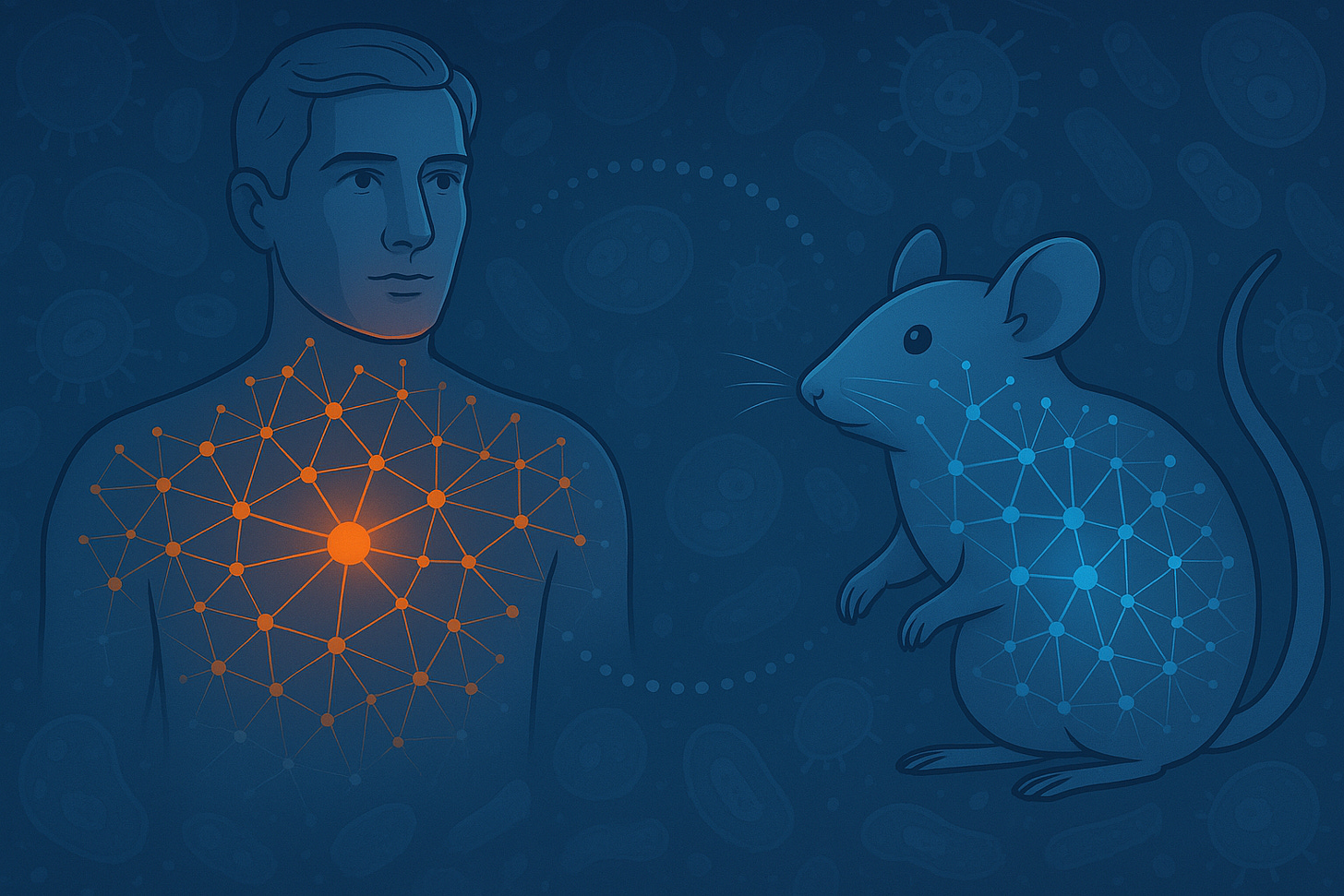TL;DR: Oncology R&D is shifting from animal proxies to patient-derived, clinically grounded models.
Reverse translation flips R&D: start with human clinical data → discover mechanisms → build preclinical models, not vice versa.
Case study: three‑cell niches (CD4 T, CD8 T, dendritic cell) found in patient tumors drive response to PD‑1 therapy, missed by common mouse models.
Why it wins: human biology is more predictive, faster, and now FDA‑endorsed via NAMs (New Approach Methods) and reduced animal‑testing mandates.
Investor edge: human‑validated targets/biomarkers de‑risk trials, streamline approvals, and promise higher ROI in immuno‑oncology.
Biotech’s longstanding reliance on animal models has delivered many insights, but also an alarming 90% clinical failure rate for oncology candidates. A patient‑first paradigm, known as reverse translation, is emerging to address this gap: researchers begin with human clinical data, uncover mechanisms directly in patient tissues, then build models and therapies grounded in those findings.
1. Reverse Translation
Mouse‑first (forward) model: Formulate hypotheses in the lab, validate in rodents, then proceed to human trials. Despite decades of use, this path sees most oncology drugs fail in patients. That’s not surprising, since mice and humans differ in tumor heterogeneity, immune cell subsets, and tissue architecture.
Reverse translation inverts the process:
Resect patient tumor lesions and record clinical outcomes.
Analyze with advanced tools (single‑cell “omics,” spatial mapping).
Hypothesize mechanisms based on human biology.
Model and optimize in vitro or in animals only after establishing human relevance.
Why the shift now?
Technologies like multiplex imaging and spatial transcriptomics make detailed mapping of human tumor microenvironments routine.
Clinical trial designs increasingly include pre‑ and post‑treatment biopsies/resections, generating rich human datasets.
Regulatory policy is moving in this direction: the FDA Modernization Act 2.0 and subsequent guidance encourage New Approach Methods (NAMs), organ‑on‑chips, human cell assays, computational models, over mandatory animal testing.
As a result, reverse translation de‑risks clinical development and often shortens timelines, which are critical advantages in today’s competitive biotech landscape.
A Case Study in Reverse Revelation
In a neoadjuvant immunotherapy trial for liver cancer, we began by profiling patient tumor samples before and after PD‑1 blockade. Rather than seeking to confirm an animal‑derived hypothesis, we used a wide array of molecular and spatial profiling technologies to look for actionable patterns in the human data itself. This led to the discovery of an immune triad, clusters where a CD4⁺ helper T cell, a CD8⁺ T cell, and a dendritic cell co‑localize. These triads correlated closely with tumor necrosis, suggesting they are key to effective immune responses. Crucially, this three‑cell interaction had not been predicted by earlier mouse studies, underscoring the value of starting with human biology. The causal role of these triads was then validated in a mouse system designed to model this complexity.
Implications for Oncology Innovation
New targets and combinations: Mechanisms like the immune triad suggest novel interventions, agents that enhance dendritic‑T‑cell cooperation or expand helper T‑cell populations alongside checkpoint inhibitors.
Biomarker‑driven trials: Spatial or molecular assays quantifying human‑derived niches can stratify patients, boosting trial success rates and supporting premium pricing.
Platform leverage: Firms that integrate clinical sample access, advanced analytics, and reverse‑engineered discovery pipelines can rapidly expand into multiple indications with human‑validated programs.
Regulatory alignment: Building dossiers around NAMs and patient data can streamline FDA review and reduce the risk of late‑stage surprises.
For investors, companies pioneering reverse‑translation platforms represent a high‑conviction bet on the next wave of success in immuno‑oncology.
Conclusion
Reverse translation transforms translational research by grounding it in patient biology. With spatial‑omics technologies maturing and FDA policy firmly supporting human‑based methods, a patient‑first workflow is swiftly becoming the gold standard. Biotech investors who recognize and back this paradigm shift will find themselves at the forefront of more predictive, efficient, and ultimately successful cancer drug development.




